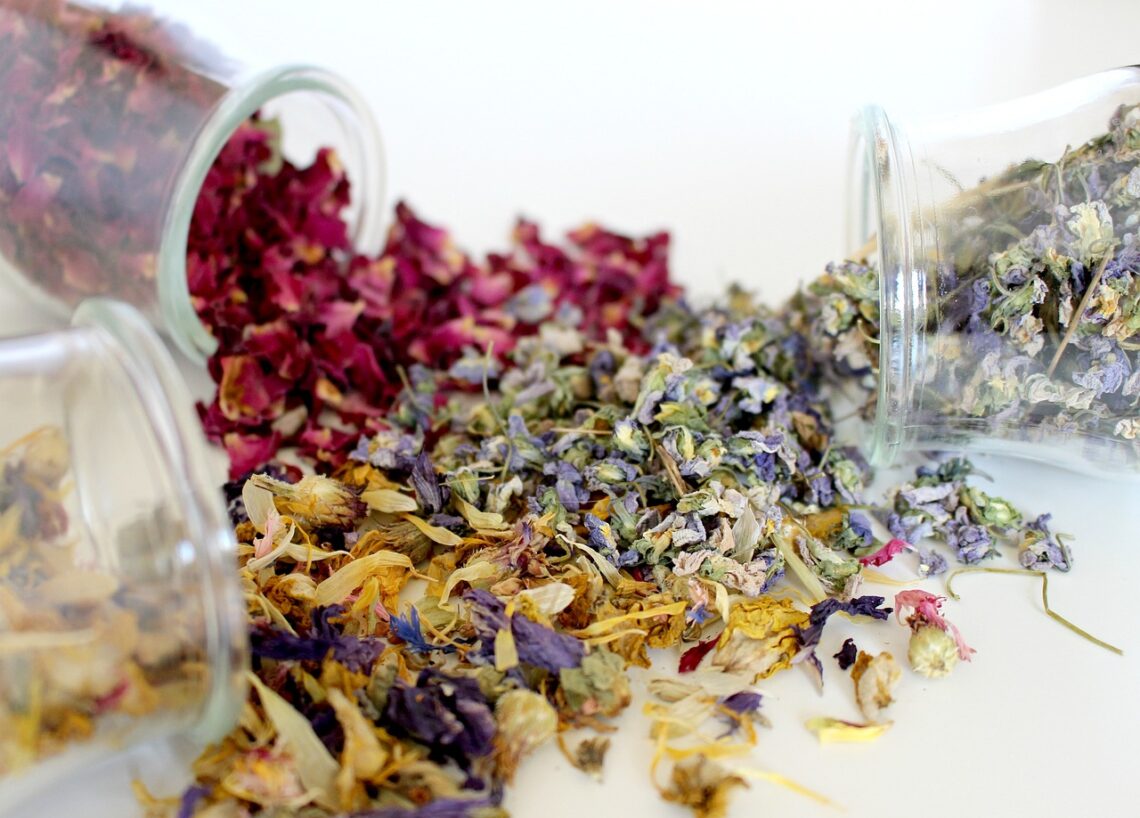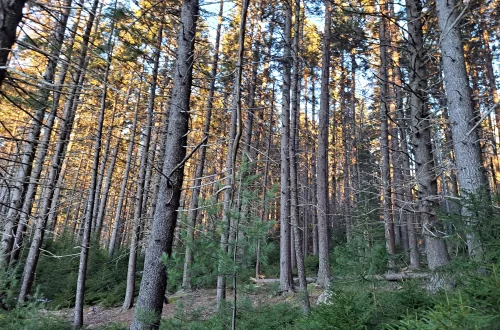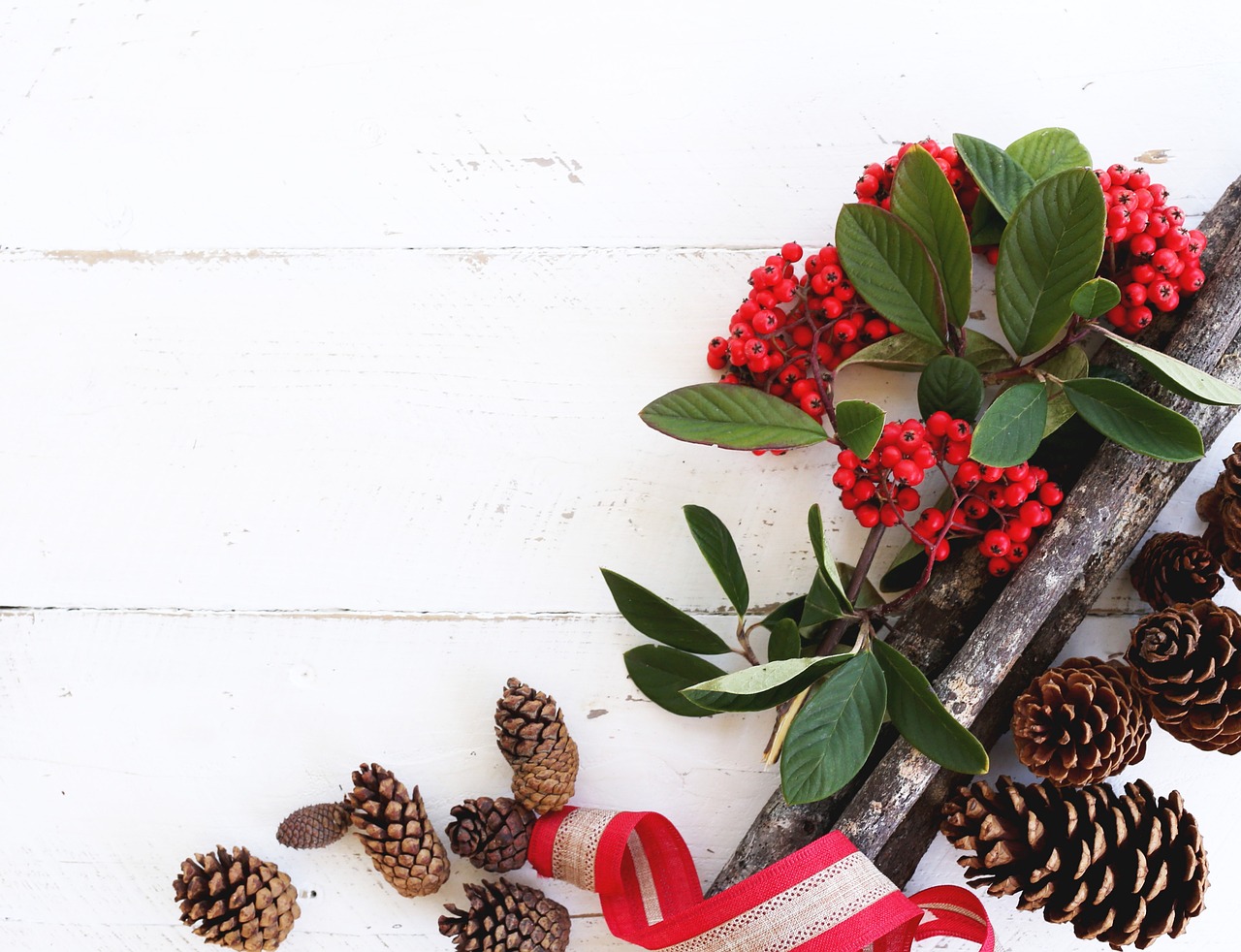Why buy tea bags when you can grow your own loose leaf tea right in your garden!
Switching from tea bags to loose leaf teas may not seem like a big deal. But many storebought tea bags contain plastic and staples and string and paper that can create a lot of unnecessary waste. Loose leaf teas, on the other hand, are completely biodegradable, perfect for composting and they’re budget-friendly too!
In this guide, I’ll introduce you to some of the best quality loose leaf tea varieties you can find – including bulk teas from stores and herbal teas you can grow at home. You’ll also find tips on brewing and storing tea, so you’ll always have the absolute freshest “cuppa” at hand. If you love tea (and reducing waste), you’ve come to the right spot!
Affiliate disclosure: As an Amazon Associate, I may earn commissions from qualifying purchases.
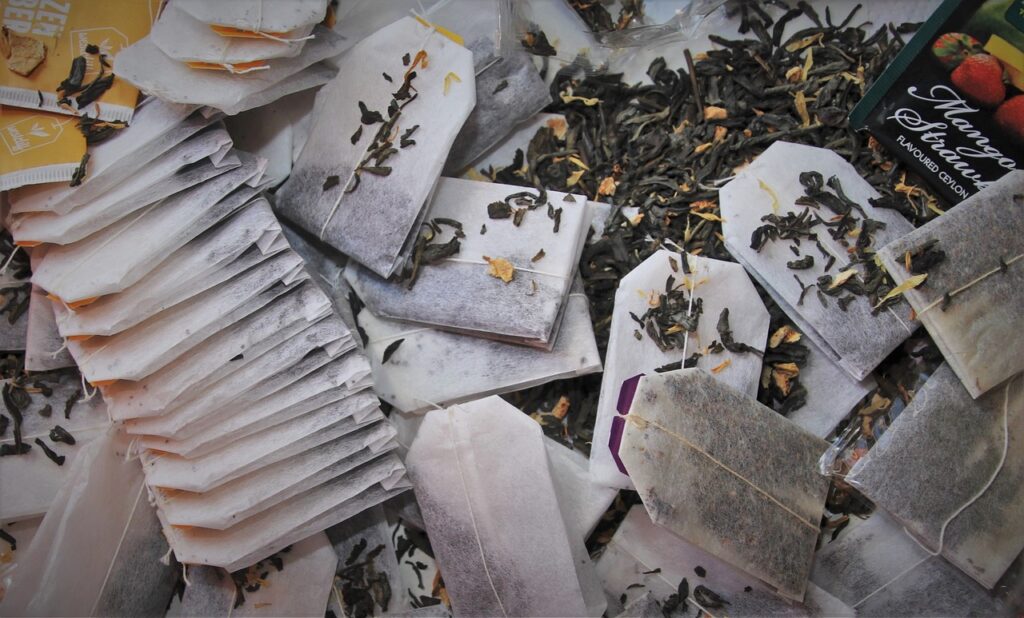
Why Use Organic Loose Tea?
While tea bags may look innocuous, many traditional storebought tea bags contain plastic. In fact, even some paper tea bags use plastic as a sealant!
These plastic materials can create a lot of waste and they won’t break down properly in a compost bin. But more than that, studies have found that tea bags that contain plastic can also release microplastics into your tea. No thank you!
Loose leaf tea, on the other hand, is just that: loose tea leaves! Loose teas are often purchased in bulk, which means you can skip using tea bags and all that plastic storebought packaging too. However, many loose leaf teas can also be grown at home, saving even more money, and reducing transportation waste at the same time.
Beyond sustainability, pre-bagged teas can be quite limited in variety. You can find a few herbal teas, caffeinated teas, and that’s about it. But if you start working with loose leaf teas, you can brew fresh tea from a wider range of ingredients and even blend up your own loose leaf tea concoctions to perfectly suit your tastes!
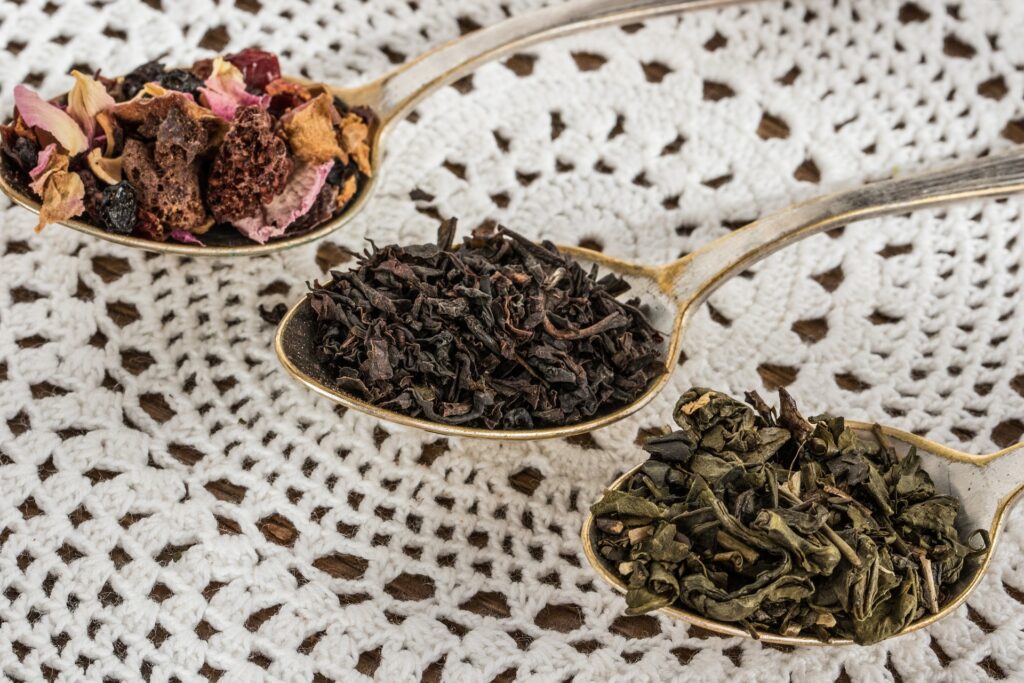
Sourcing Organic Loose Leaf Tea
If you want to get your hands on loose leaf tea, you have two basic options: you can either buy loose teas or grow them yourself.
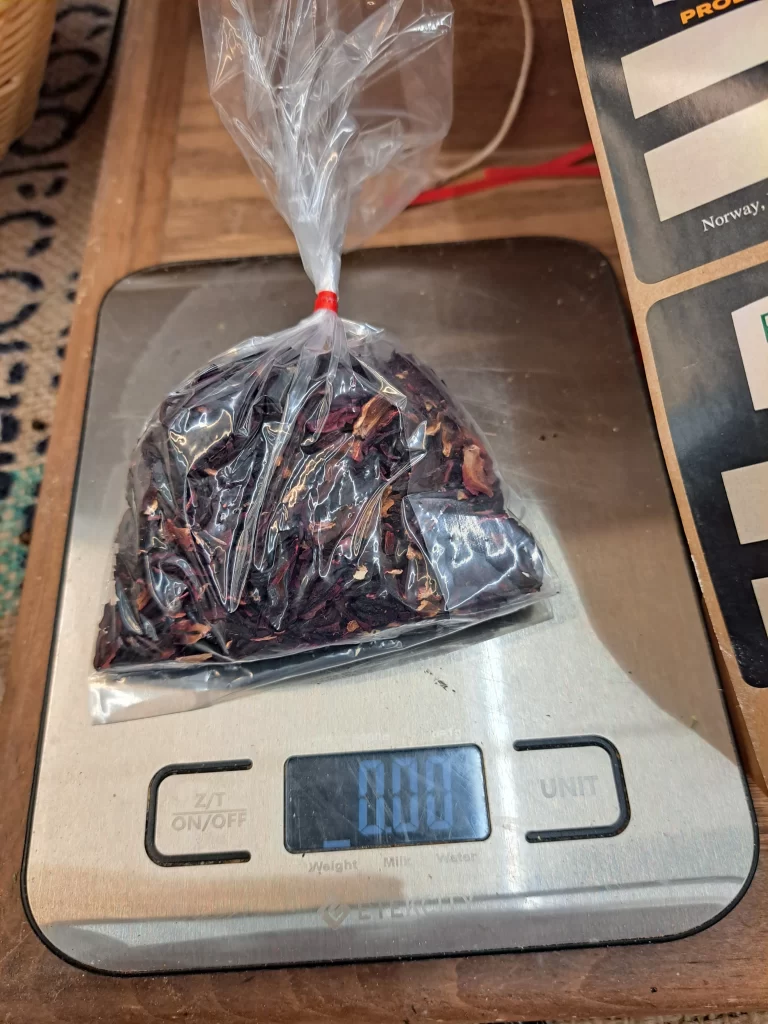
Purchasing Loose Leaf Teas
Local health food stores often have loose leaf teas available in their bulk section, but you can also purchase bags of loose teas online, which contain less packaging than your average bagged tea.
If you’re buying in bulk at stores, bring your own baggie or Mason jar to scoop your tea into to reduce plastic waste even more. And avoid the temptation to overbuy! Dried teas typically have the best flavor if you use them within 1 year of purchase.
Unless you live in a tropical area, buying loose leaf tea is your best option if you want to enjoy caffeinated teas like loose leaf black tea or loose leaf green tea. Green and black loose tea leaves both come from the Camellia sinensis plant, or tea plant, which grows in warm areas (zones 7 to 9) and is difficult to cultivate in cold areas without a greenhouse.
Tip: Just because teas are labeled as “organic” doesn’t necessarily mean that they are! Be sure to purchase teas from reliable supplies and look for the USDA organic certification label on all “organic” loose teas to guarantee that you’re getting a quality product.

Growing Loose Leaf Teas
While I definitely purchase some bulk teas, one of my favorite parts of loose leaf tea making is that I can grow many of my favorite loose leaf teas at home… and so can you!
Many of the most popular herbal teas can be grown in a small garden or in pots on a porch or patio. In fact, some herb plants are even small enough to keep on a sunny windowsill herb garden.
Not only does growing your own tea provide you with a certain satisfaction and a sense of accomplishment, but it also gives you complete control over the quality of the teas you’re drinking. You can grow teas completely organically, harvest them at their peak and store them just the way you want to!

Best Herbs to Grow at Home for Loose Teas
When most people consider growing an herb garden, they have cooking with fresh herbs on their mind. But many common culinary herbs can also be used for hot or cold teas, and the results are delicious.
Below are some of the most popular herbal teas to grow at home, but use this list as a starting point. If you enjoy working with teas and herbs, there are many more edible herbs to try!
- Chamomile. One of the most classic herbal teas around, chamomile flowers have a delicate floral flavor that pairs beautifully with many other herbal teas. Harvest flowers often to keep chamomile plants productive.
- Peppermint. Peppermint has a strong, minty flavor that works well on its own or when paired with other bold tea flavors. Grow peppermint plants in pots to keep them from taking over!
- Spearmint. Loose leaf spearmint tea has a bright and minty taste. Like peppermint, spearmint grows quickly, so you’ll want to keep it in pots!
- Thyme. Thyme isn’t just a culinary herb! Fresh or dried thyme can be brewed into herbal teas and it tastes particularly good with a squeeze of lemon and some honey.
- Sage. Yep, culinary sage also makes a tasty tea! For even more garden color, try out colorful sage varieties like tricolor or purple sage.
- Lemon balm. One of my personal favorites, loose leaf lemon balm tea has a delicate, lemony flavor that can be blended with many other herbs. This plant is a member of the mint family, but it doesn’t grow quite as vigorously as peppermint.
- Rosemary. Rosemary leaves make a rich and savory tea – perfect for chilly winter days. Plants aren’t particularly cold hardy though, so they’ll need to be overwintered indoors or grown as annuals in cold areas.
- Lavender. Many people don’t know that lavender plants are edible, but some of them are! Choose English lavender (Lavandula angustifolia) if you want to use lavender for teas or other recipes.
- Raspberry leaves. Everyone knows that raspberries are edible, but raspberry leaves can also be brewed into teas. Leaves have a slightly fruity flavor, but they’re quite mild overall.
- Bee balm. Bee balm is another member of the mint family and its leaves taste a bit like oregano! Bee balm flowers can also be brewed (fresh or dried) into teas.
- Holy basil. Standard basil can be made into a tea too, but holy basil is more often grown for tea making. This tea has a mild, herbal flavor and it’s often paired with chamomile and lavender.
- Turmeric. Turmeric root is technically a root vegetable, but it can be used for teas! Dried or fresh, turmeric makes a rich, slightly woody-tasting tea with a bright yellow to orange coloration.
- Ginger. Like turmeric, ginger root is a vegetable, but it makes a tasty tea. Use it dried or fresh for a tropical-tasting tea with a bit of spicy heat.
- Other mints. Peppermint and spearmint get a lot of attention, but you can find other mint plants for tea making — like chocolate mint, apple mint and orange mint. These plants can be aggressive growers, so keep them in pots.
- Catnip. Humans can love catnip as much as cats do! As a tea, catnip has a mild yet refreshing flavor that won’t overpower other herbs.
- Dandelion root. Dandelions are incredibly useful plants and they’re entirely edible! If you want to make dandelion tea, roots are usually roasted before brewing to boost their flavor.
Tip: Herbal teas can be used dried or fresh, but you’ll want to dry herbs for longer term storage. Herbs with woody stems (like lavender) are easy to dry with hang-drying, but tender-stemmed herbs and roots (like turmeric) will usually dry better in a food dehydrator or an oven set on the lowest setting. For an ultra-low tech drying option, place your herbs on a cookie sheet in a hot car in summer and let them dry until they’re good and crispy!
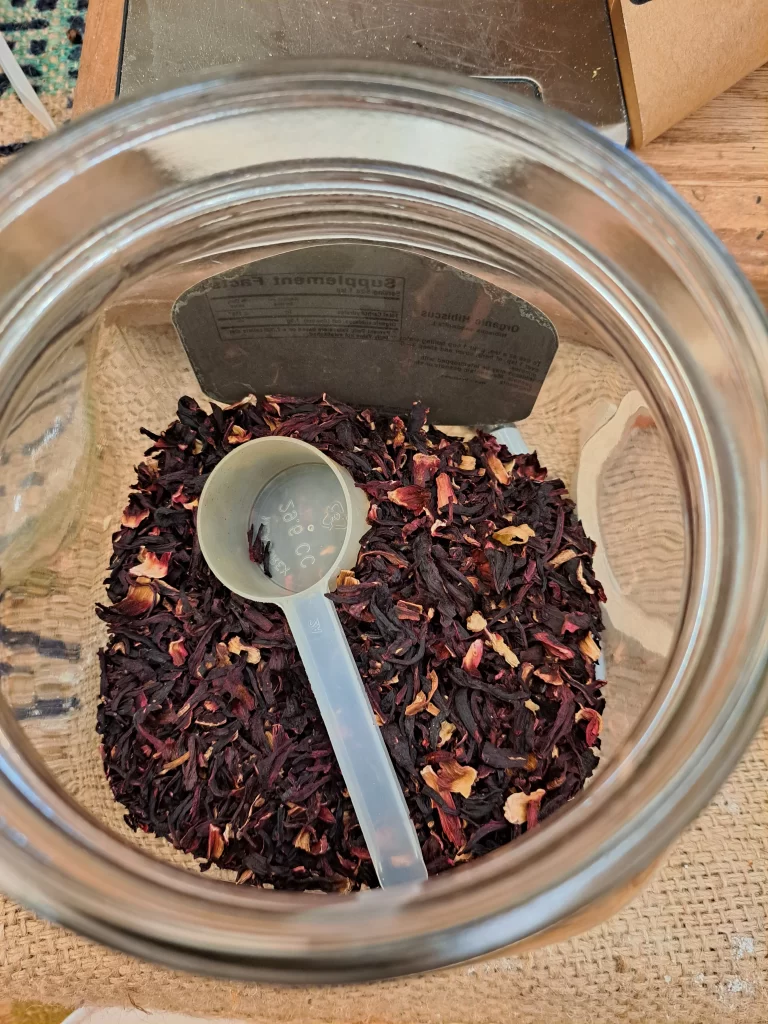
Making Your Own Loose Leaf Tea Blends
Of course, you can use loose leaf teas just as they are, but you can also blend several different tea varieties together to make a brew that’s totally your own.
I recommend doing a bit of research to determine what flavors and herbs work well together. You may also need to experiment a bit to determine how much of each herb to use.
To get you started, here are a few of my favorite go-to tea brews:
- Lavender and chamomile tea. 1 part edible lavender flowers, 1 part oatstraw and 1 part loose leaf chamomile tea. Cover and steep for 5 minutes.
- Fresh ginger tea. 2 parts loose peppermint tea leaves, 1 part fresh ginger root (chopped), a squeeze of lemon and a drizzle of honey. Cover and steep for 10 minutes.
- Zingy tea! 1 part turmeric root (chopped), 2 parts ginger root (chopped), a squeeze of lemon and a drizzle of honey. Cover and steep for 10 minutes.
For even more inspiration, you may want to explore books like:
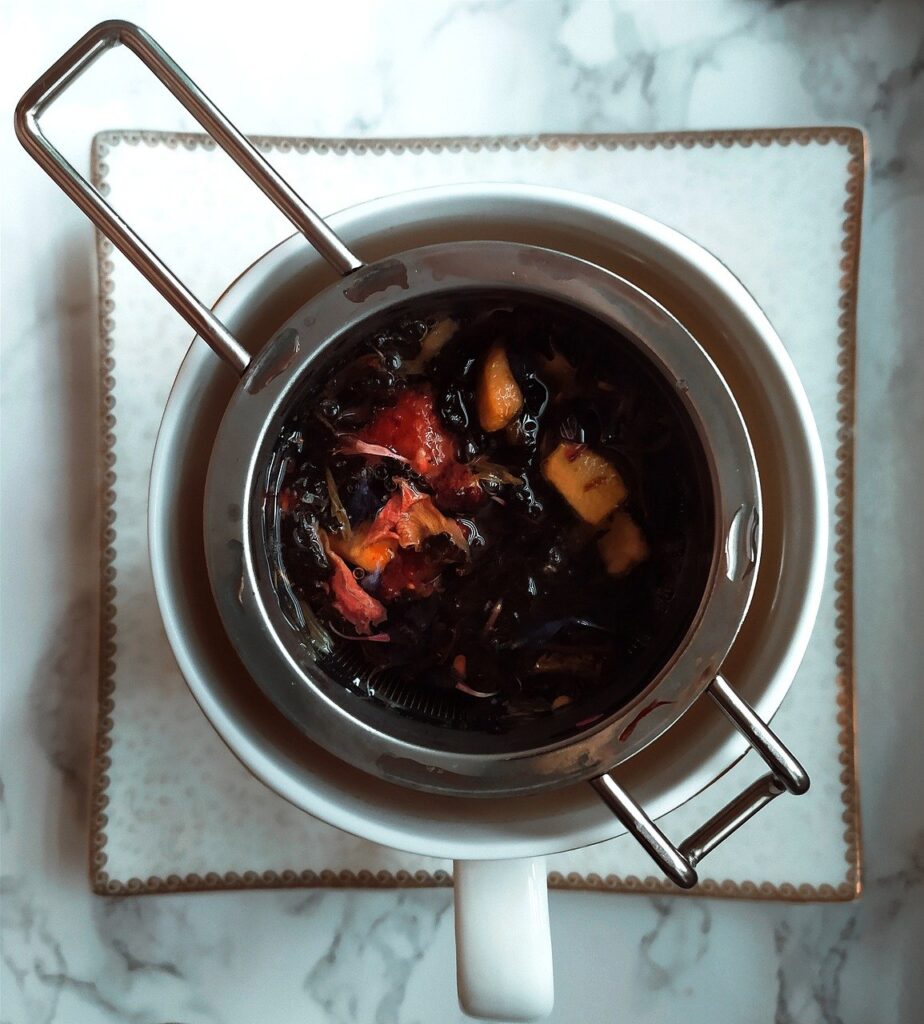
How to Brew Loose Leaf Tea
Most people choose bagged teas because of convenience, but brewing your own loose leaf tea doesn’t need to be complicated. All you need are your favorite fresh or dried teas, something to hold the tea leaves so they don’t make a mess and a vessel to brew in!
Then, just scoop your tea leaves into a strainer or loose leaf tea infuser, brew for the appropriate amount of time (it helps to cover teas with a lid to keep them warm) and enjoy!
Suggested brew times for different tea types
- Black and oolong loose leaf teas are typically brewed from 5 to 8 minutes
- White loose leaf teas are brewed from 4 to 6 minutes
- Green loose leaf teas are brewed from 2 to 4 minutes
- Herbal teas are brewed from 5 to 8 minutes (herbal teas made from fresh ingredients may need to be brewed longer)
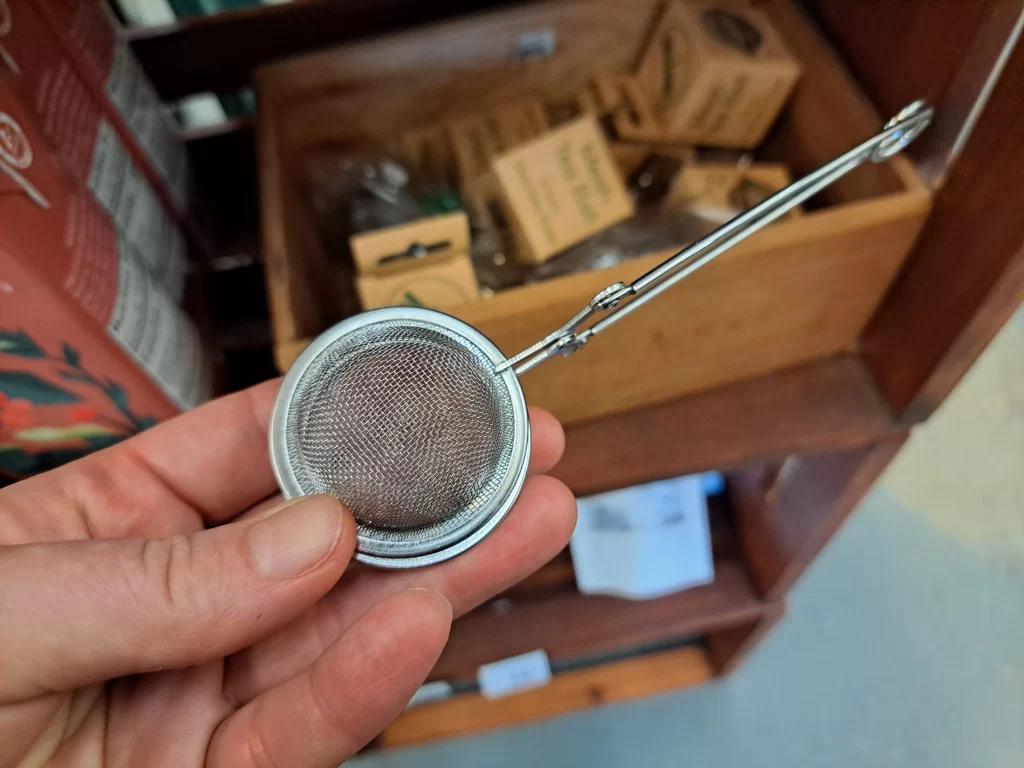
Choosing a tea strainer, infuser, or reusable tea bags
Teas can be brewed in a tea strainer (some teapots come with a built-in strainer for convenience), loose tea infuser or reusable tea bags. These items are generally plastic-free and reusable, which is a win-win in my book. I personally use a loose leaf tea ball because I find them to be quite easy to clean and they fit in my travel mug… but that’s just me!
- Tea strainers typically sit on top of mugs or within a teapot. Tea leaves go in, hot water is poured into the strainer and then the tea is allowed to brew before the tea strainer is lifted away.
- Infusers are usually smaller than strainers and they slip inside a mug or tea pot. Infusers are typically made of stainless steel, but they can also be made of silicone.
- Reusable tea bags are sometimes made of silicone, but they can also be made of cheesecloth or muslin. Muslin and cheesecloth bags will need to be replaced eventually, but they are biodegradable and can be composted!
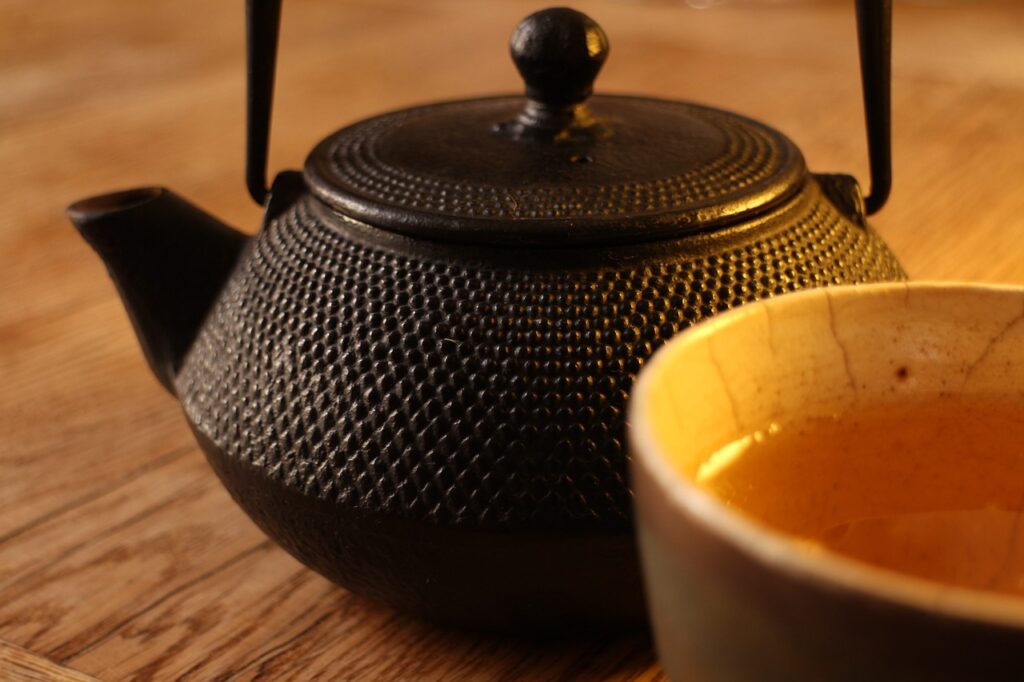
Teapots and to-go mugs
Teapots can be made of glass, ceramic or cast-iron and they come in different colors, shapes and sizes. I use a ceramic tea pot, but glass pots can be fun since they let you watch tea colors change (they’re particularly good for blooming teas). Cast iron pots, on the other hand, have good heat retention and can prevent teas from cooling off too quickly.
If you’re in a rush, you can also brew teas in a to-go cup with a built-in strainer and lid to keep your tea toasty!

How to Store Loose Leaf Teas
For freshness, store loose leaf teas in an airtight container out of direct sunlight and make sure your teas are completely dry before storing them! If you’re drying your own tea leaves, leaves should be dried until they’re easy to crumble with your fingers. Tea leaves that are bendable still retain too much water and will molder during storage.
I personally store my loose leaf teas in Mason jars and I write the tea name and purchasing/harvesting date on the top so I know what tea I’m working with. However, you can also find cute tea tins to store your teas in. For best flavor, loose leaf teas should be used within 1 year. If you have extra leaves left over at the end of the year, add them to your compost pile and go harvest some more herbs for teas!

Frequently Asked Questions About Loose Herbal Teas
How do you plant a tea garden?
Most herbal tea plants will grow best in a full sun location with well-draining soil. Start out with easy to grow plants that you enjoy the flavor of and then expand from there!
What is the easiest tea to grow?
Many herbs are quite easy to grow and harvest for tea. Some good choices for beginners include peppermint, lemon balm and chamomile.
How do I choose loose tea?
If you’re new to working with loose leaf teas, start out with teas you like the flavor of. If you like fruity teas, go for plants like hibiscus, lemon balm and lemon verbena. If you prefer fresh, minty tastes, spearmint and peppermint teas are hard to beat!
